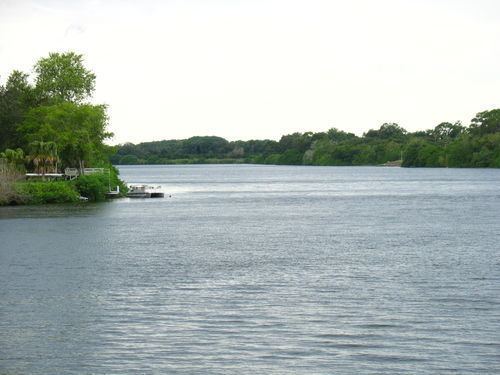Length 108 km | Source Lake Hicpochee Mouth elevation 0 | |
 | ||
Bridges Cape Coral Bridge, Edison Bridge | ||
S dwest florida usa kurz impressionen cape coral caloosahatchee river
The Caloosahatchee River is a river on the southwest Gulf Coast of Florida in the United States, approximately 67 miles (108 km) long. It drains rural areas on the northern edge of the Everglades, east of Fort Myers. An important link in the Okeechobee Waterway, a manmade inland waterway system of southern Florida, the river forms a tidal estuary along most of its course and has recently become the subject of efforts to restore and preserve the Everglades.
Contents
- S dwest florida usa kurz impressionen cape coral caloosahatchee river
- Map of Caloosahatchee River Florida USA
- hd caloosahatchee river fort myers fl usa
- Description
- Video History
- Crossings
- References
Map of Caloosahatchee River, Florida, USA
hd caloosahatchee river fort myers fl usa
Description
The river issues from Lake Hicpochee, in southeastern Glades County, approximately 10 mi (16 km) west of Clewiston. It flows west-southwest past LaBelle, where it becomes tidal, forming an estuary along its lower 25 mi (40 km). It broadens as it nears the gulf, passing Fort Myers and Cape Coral. It enters the Gulf of Mexico 10 mi (16 km) southwest of Fort Myers in San Carlos Bay, protected by Sanibel Island.
The 5 mi (8 km) Caloosahatchee Canal connecting Lake Hicpochee to Lake Okeechobee allows continuous navigation from the Caloosahatchee to the Okeechobee Waterway system; oxbow lakes mark isolated stretches of the original waterway. In 2013 heavy rains in southern Florida resulted in high runoff into Lake Okeechobee; rising lake levels forced the United States Army Corps of Engineers to release large volumes of polluted water from the lake through the St. Lucie River estuary to the east and the Caloosahatchee River estuary to the west. Thus the normal mix of fresh and salt water in those estuaries was replaced by a flood of polluted fresh water resulting in ecological damage.
Since the late 19th century, dredging and channelization of the river, as well as the artificial connection to Lake Okeechobee and its use as a water supply for urban and agricultural uses, have substantially altered the hydrology of the river. As a result, both the magnitude and timing of water delivery to the estuary have been substantially altered. Recent programs by the state government have attempted to establish minimum flow levels in the river, in part to help restore the water supply to the Everglades. A federal wildlife refuge for manatees has been established at the mouth of the river on San Carlos Bay near Fort Myers.
Video History
In 2007, PBS Earth Edition produced 27 minute video titled: The Caloosahatchee. The video can be watched for free here: http://video.wgcu.org/video/1576144404/.
Earth Edition's description of the video follows: There are really two Caloosahatchee Rivers. The first is a million-year-old serpentine waterway that snaked halfway across the Florida Peninsula; the second, a deep, wide, trench qourged by man through the South Florida landscape and simply called C-43. As dissimilar as they are, the two Caloosahatche have one thing in common - both stand at a crossroads between ruin and resuscitation.
Crossings
The following is a list of bridge crossings of the Caloosahatchee River and Canal
